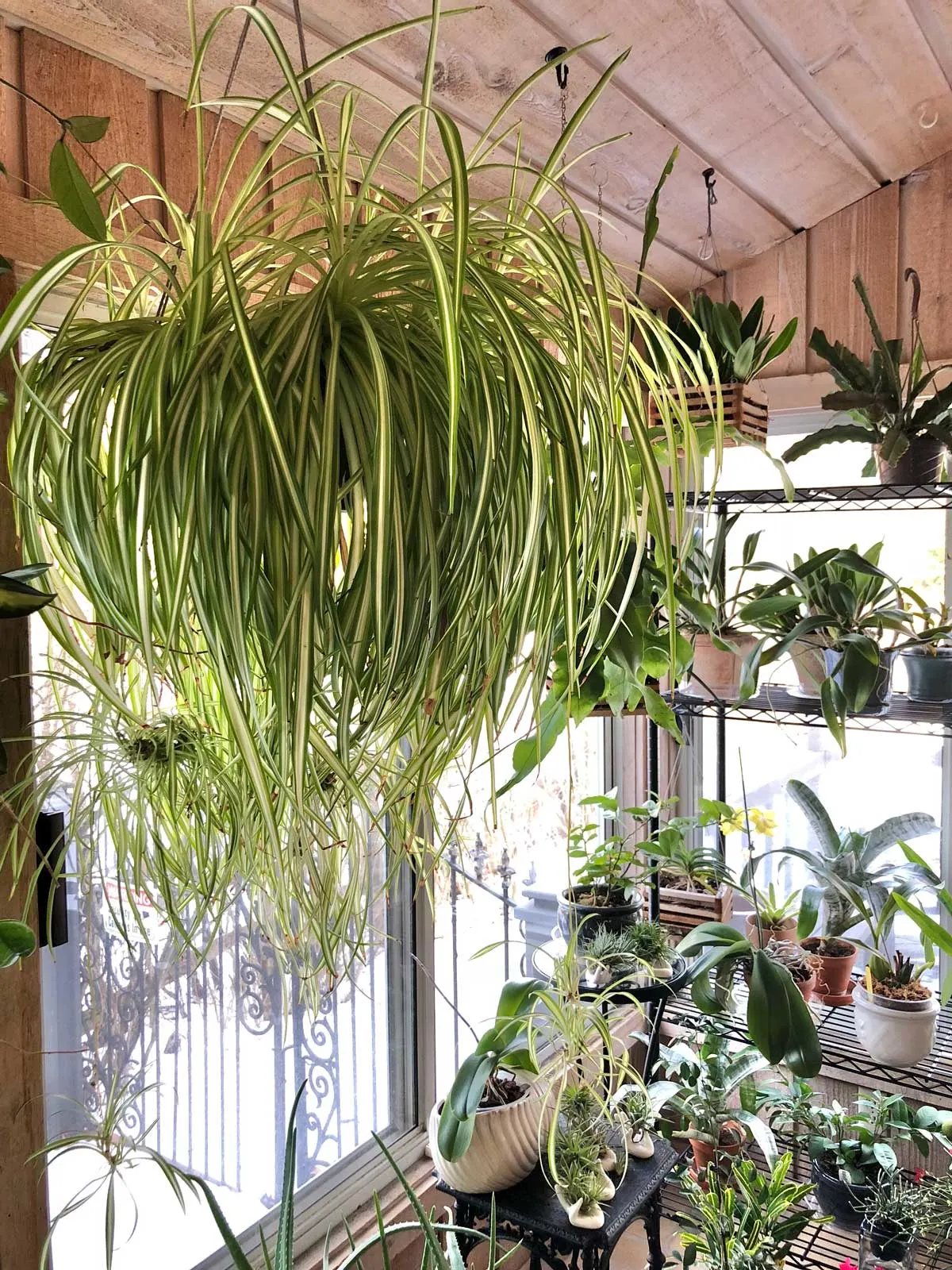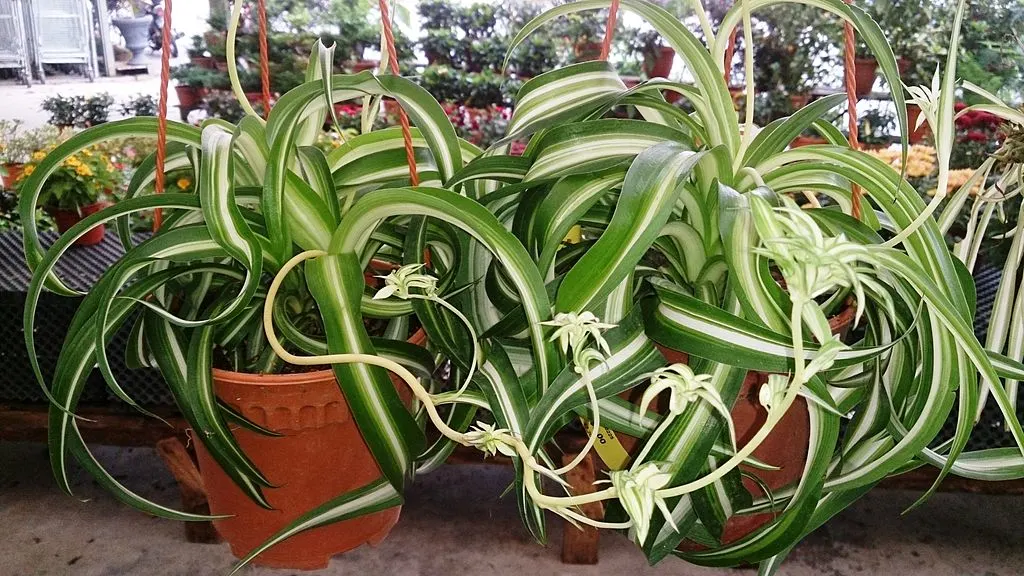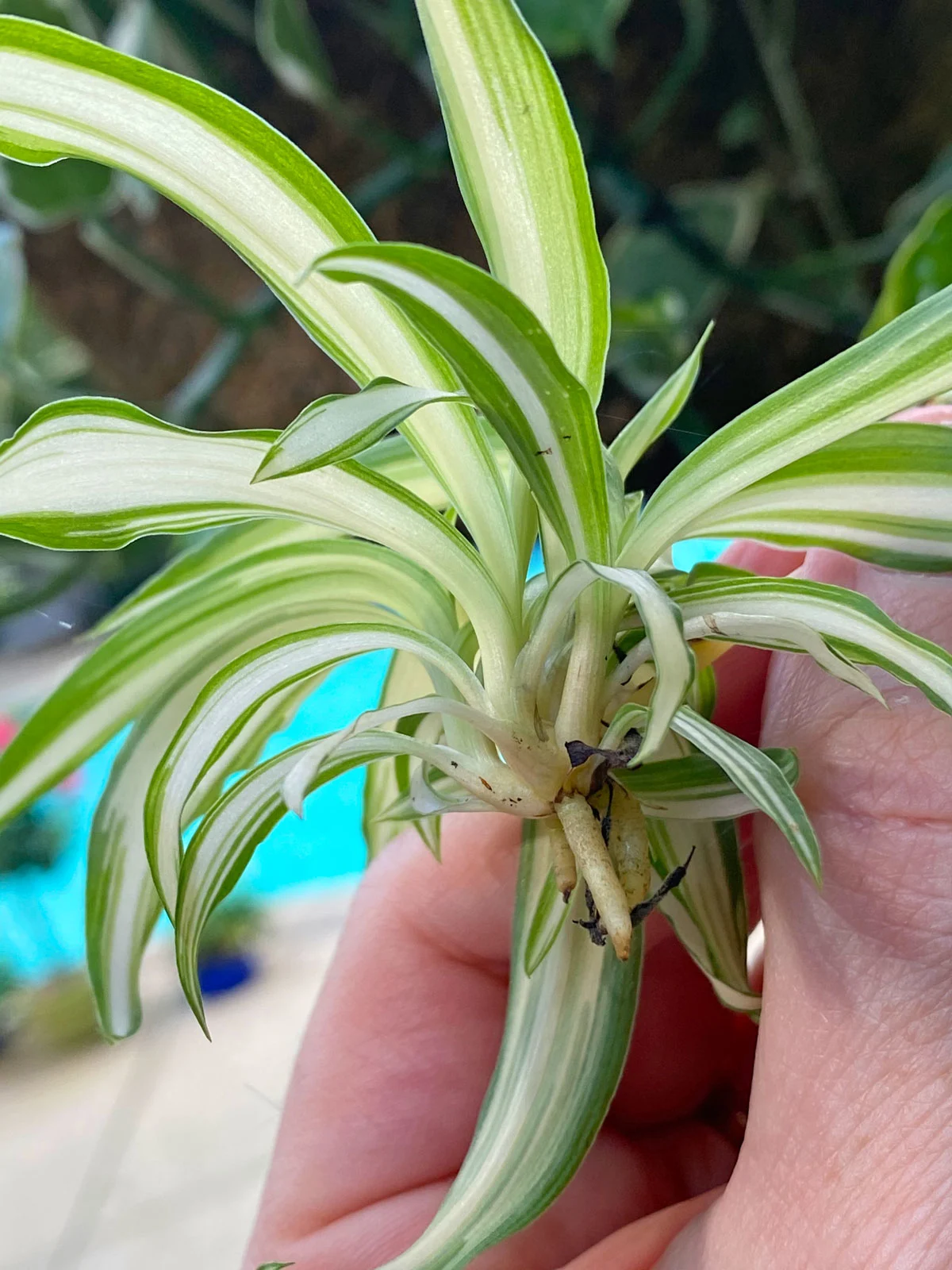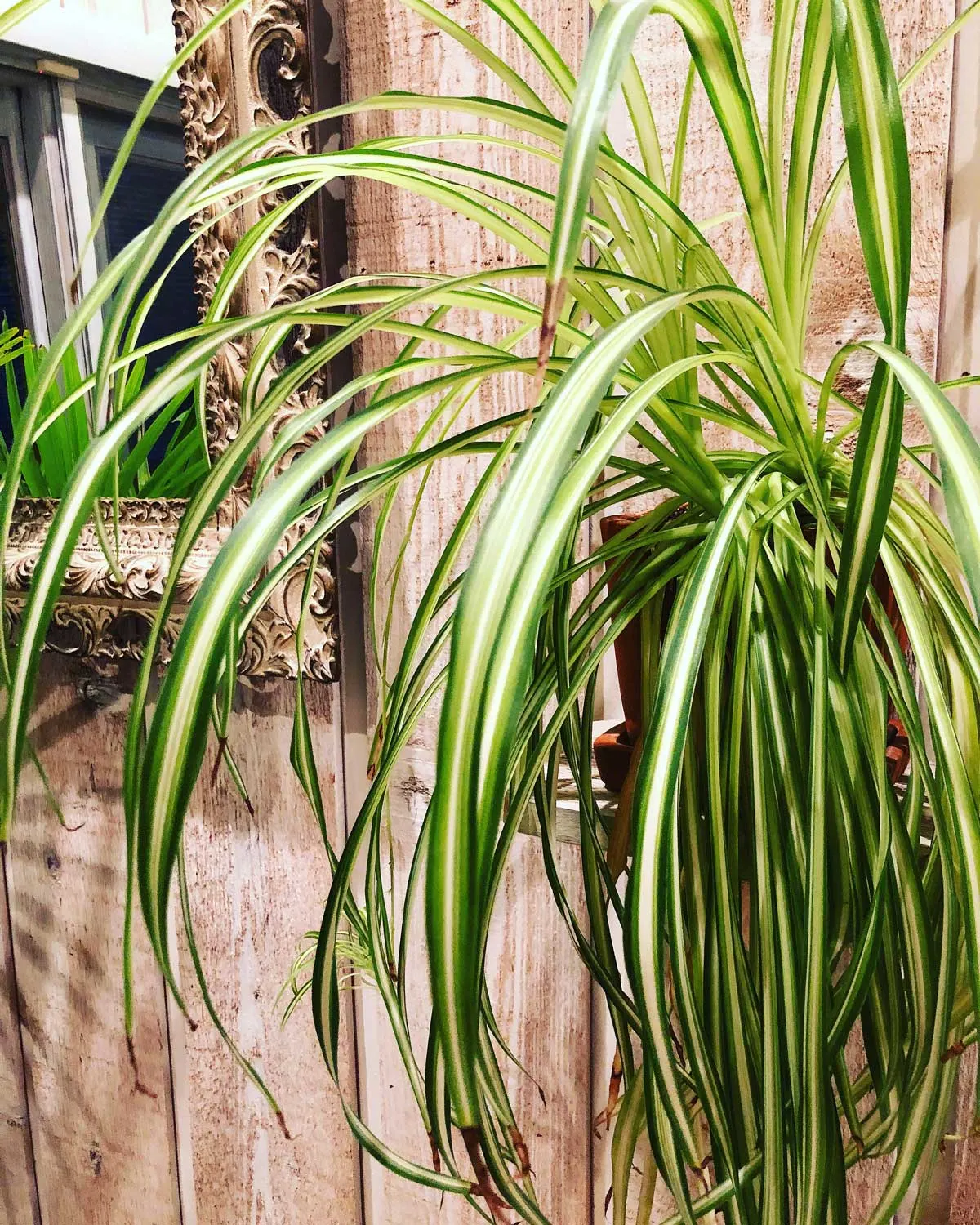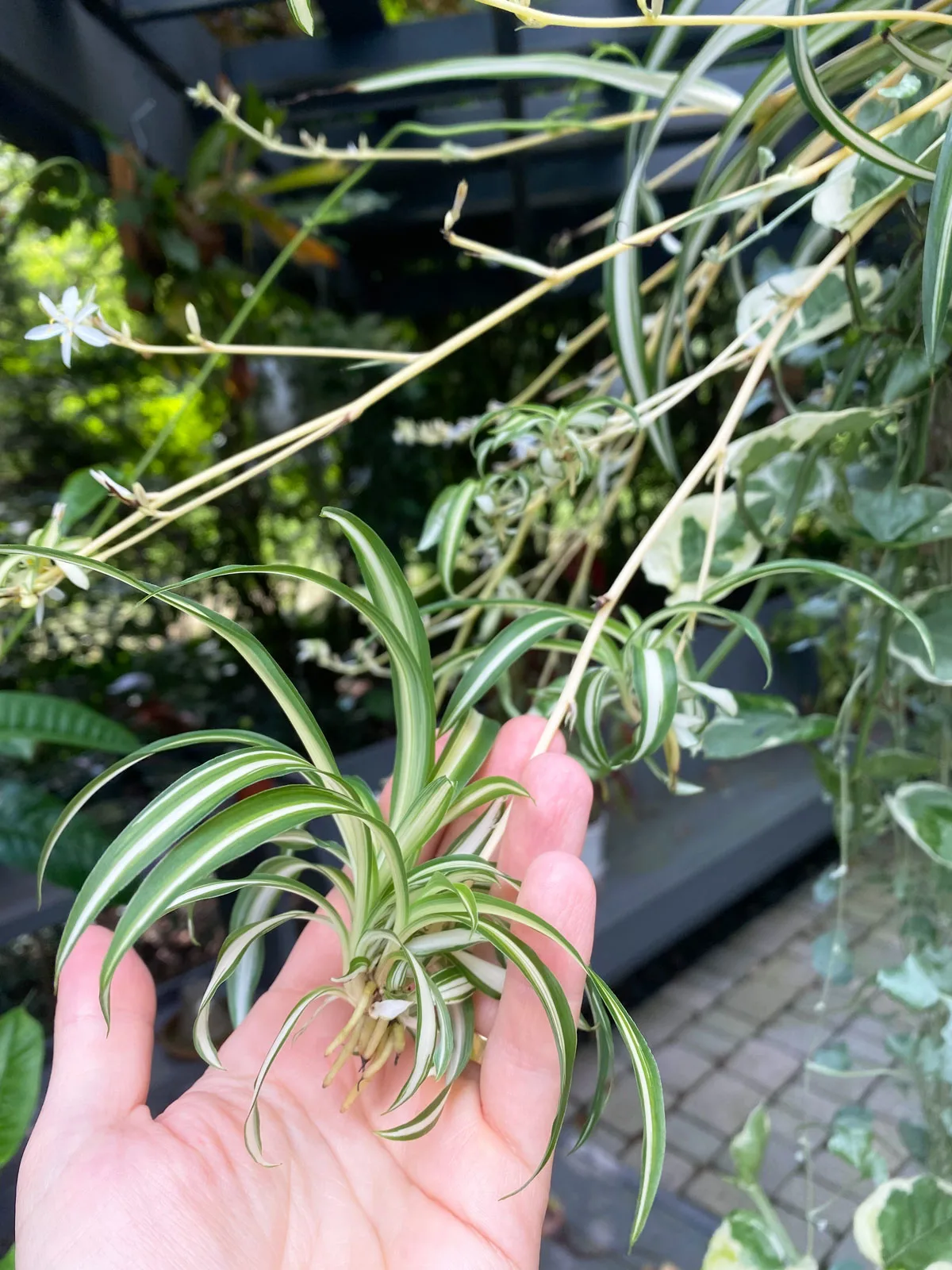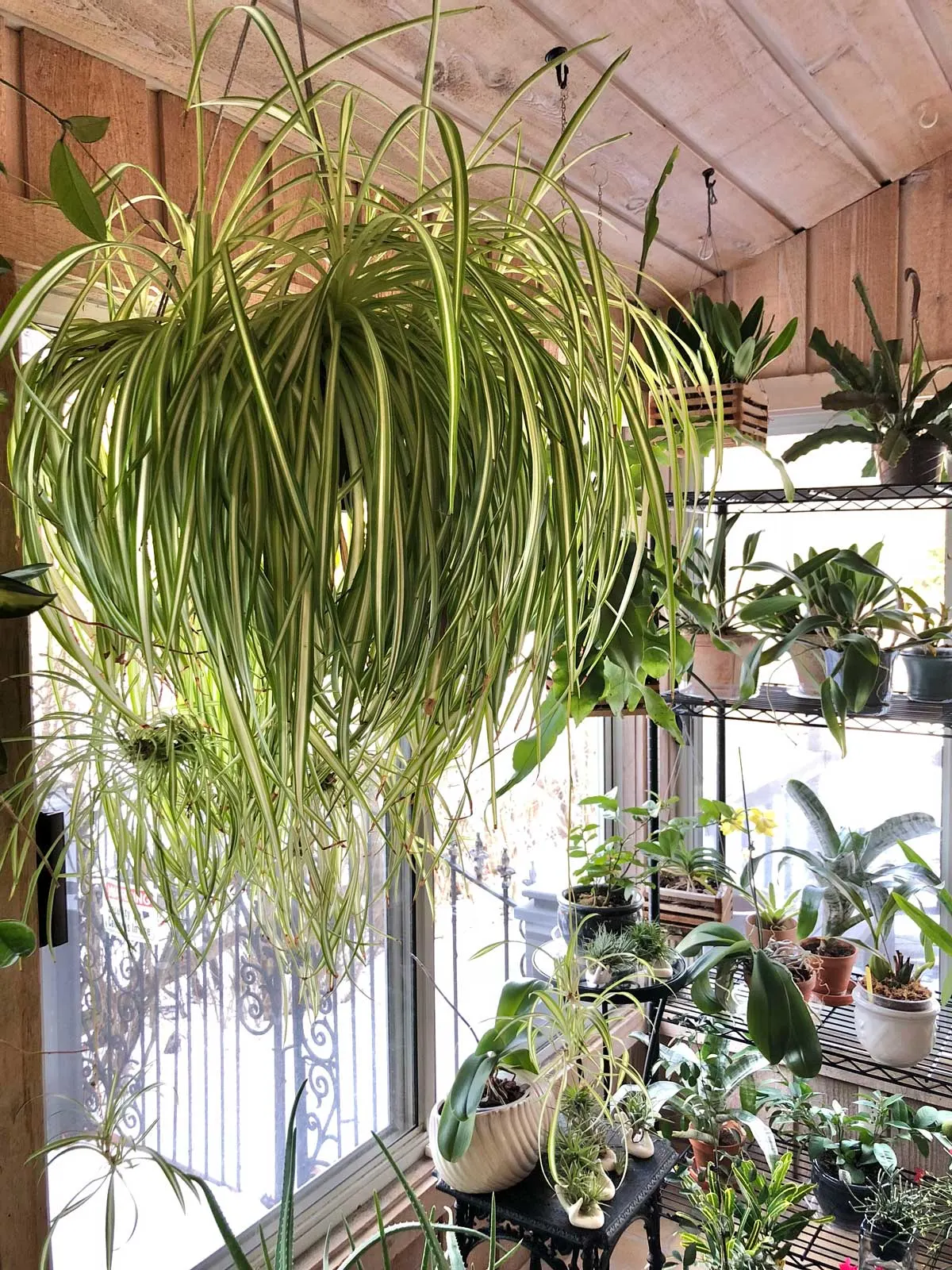Some of the links in this post may be affiliate links.
Is your spider plant turning white? Have no fear, because in this post I will help you determine why it’s turning white, and what you can do to turn it around and have a thriving spider plant once again.
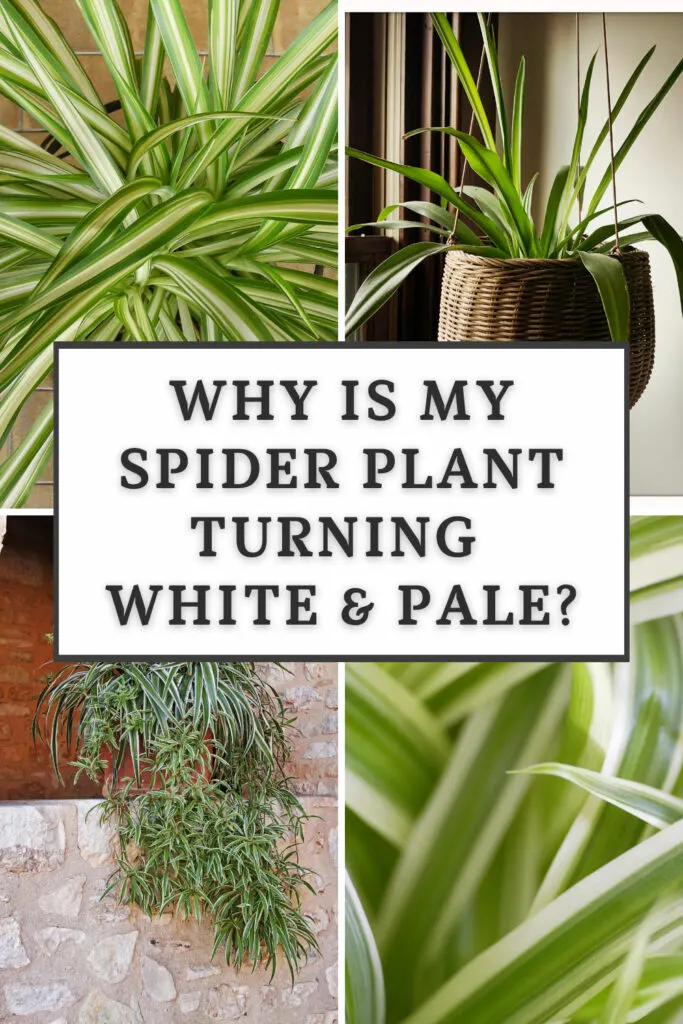
Table of Contents
WHY IS MY SPIDER PLANT TURNING WHITE?
Chlorophytum comosum, a native of South Africa and a few other countries in Africa, is commonly known as the spider plant or airplane plant. It is one of the most popular indoor plants, and for good reason.
But if some of your growing conditions are off, your spider plant leaves can turn pale or whitish.
Here are the top 3 possible reasons why you may have white or pale spider plants. In your specific case, it may be caused by just one of these things, or even a combinatio of the various reasons outlined below.
After reading this post, most of you should be able to determine exactly why. And it’s not as hard as you think.
1. IT IS THIRSTY
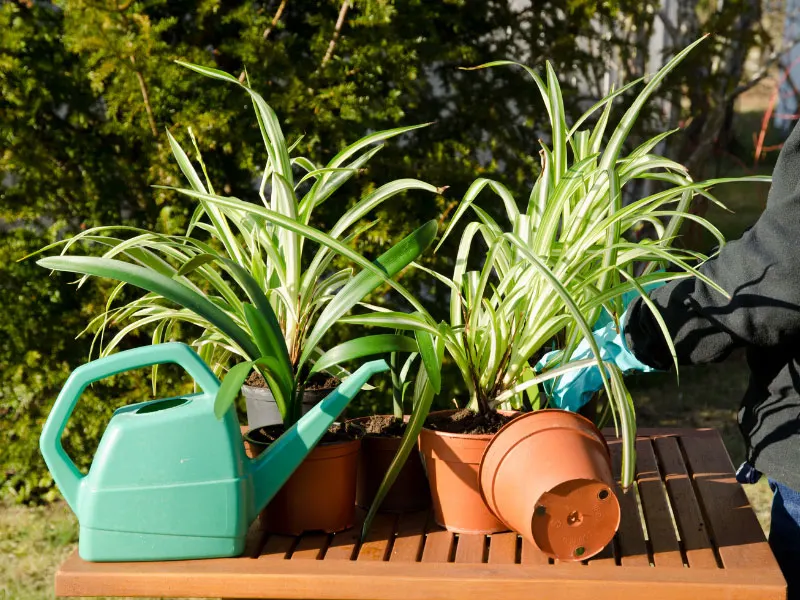
There are 3 main, common reasons why it may be thirsty, and all of these can result in pale leaves.
YOU WAITED TOO LONG TO WATER IT AGAIN
One of the most common reasons your spider plant is turning white or pale is not enough water. If your spider plant’s soil has gone completely dry, it will start to turn pale in color.
And if you keep waiting and not watering, you will start to get yellow leaves starting at the base of the plant. Spider plants really don’t like drying out completely.
Only allow the top inch or two of the potting mix to feel dry, and then go ahead and give your plant a good soak and allow excess water to drain away.
PRO TIP: Spider plants are sensitive to fluoride in tap water and this causes the tips of the leaves to turn brown. This is only ONE reason for brown leaf tips, but you might choose to water with rain water, distilled water, or any kind of purified water that doesn’t have fluoride in it.
You can always trim off the brown leaf tips if you want to continue using tap water. It’s no big deal!
If you don’t want to buy distilled water or collect rain water though, check out this easy alternative to making your own purified water at home that will also remove the majority of fluoride from your water.
Brown tips in spider plants can also result from persistent dry soil as well, among other reasons.
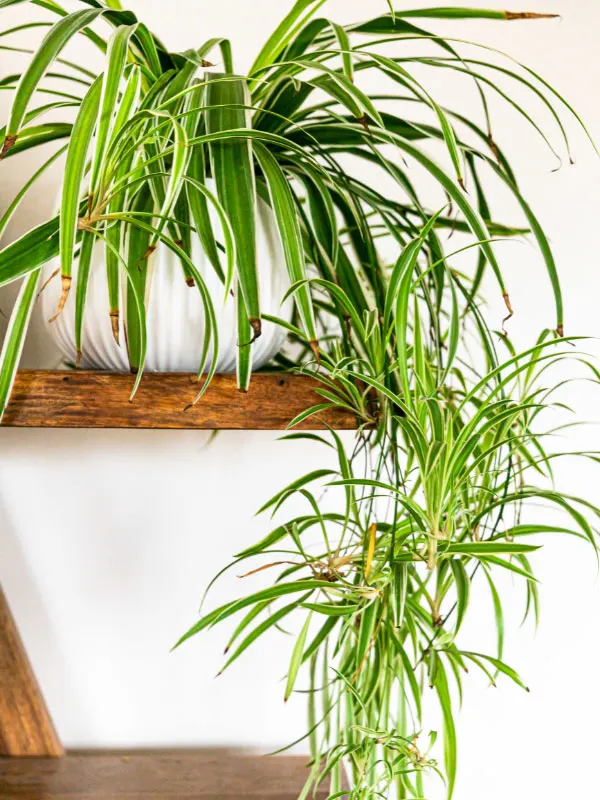
YOU’RE NOT WATERING THOROUGHLY TO BEGIN WITH
Many people are so afraid of “overwatering” that they don’t thoroughly soak their potting mix and thus, ironically, end up dehydrating their plants.
If you leave dry pockets of soil in your pot, those roots will suffer and your plant will then start to suffer and potentially turn pale and whitish.
Always water thoroughly! If your soil is not drying out fast enough, there are many reasons why this can happen. I discuss this topic in depth in my book, Houseplant Warrior: 7 Keys to Unlocking the Mysteries of Houseplant Care (link to Amazon).
Keep in mind that if your spider plant’s leaves are pale as a result of lack of moisture, for any of the reasons above, you may also notice that your plant is droopy as well. Drooping plants can also be the result of root rot, but the only way to tell is to feel your potting mix.
But a droopy plant can also be caused by soil that has stayed dry for too long! If you observe your plant being pale and droopy, stick your finger in the soil. If it is bone dry, then you need to water. If it feels wet, then you may have root rot.
Root rot can result from the lack of drainage holes at the bottom of the pot, watering too frequently, using oversized pots with a large excess of soil, and other reasons.
YOUR PLANT IS ROOT BOUND
Another reason you may have white leaves is if your plant has gotten very root-bound. Spider plants have very vigorous root systems and they will soon fill your pot.
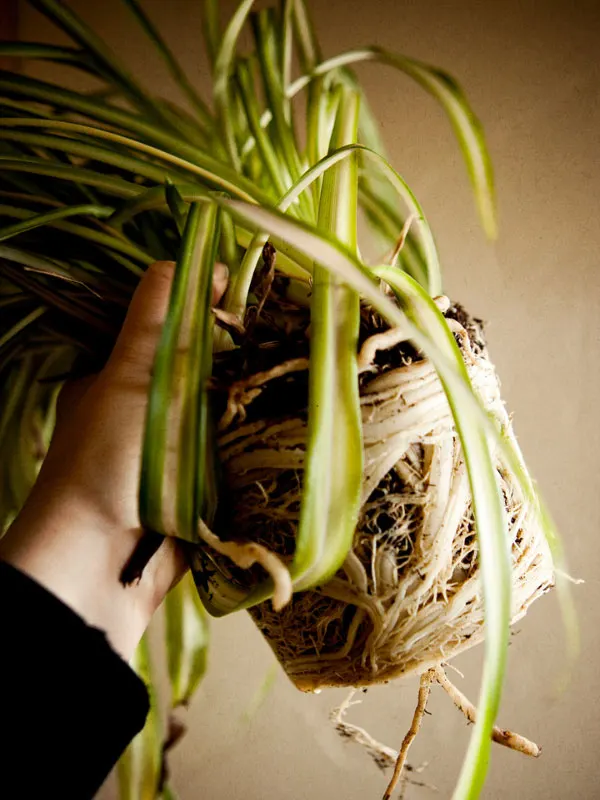
If your plant’s roots have become very crowded, it will be more difficult to keep your plant hydrated and thus could result in pale, whitish leaves.
Once you correct the soil moisture, it should slowly perk back up and regain more color.
How do you know when to repot your spider plant? There are many reasons:
- You may see roots visible through the drainage holes.
- Your plant suddenly seems to need watering more frequently.
- You may even see a hard mat of roots on the surface of the soil.
You can tell for sure if you slip your plant out of its pot and inspect the root system.
2. EXTREMES IN LIGHT
Pale leaves can also result from extremes in light. Here are 3 things to consider.
LOW LIGHT
If you have your plant in low light, the leaves of your spider plant can fade in color. Oftentimes, for variegated spider plants, the white stripe on the leaves can fade in color when they have a lack of light.
Spider plants are best grown right in front of a window. Even if it’s a window with no direct sun. However, indoors, they will even do well in a sunny spot. Partial sun would work best.
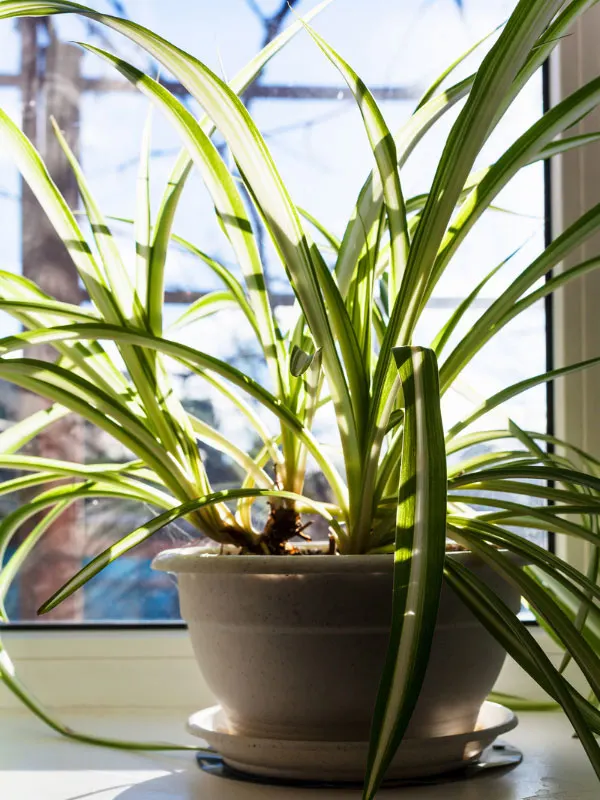
Light from Eastern facing windows that get gentle morning sun are a great option, but Western facing windows too will work. Just avoid placing your spider plant too far from a window where too little light will cause pale foliage as well as weak leaves.
Depending on where you live and how strong the sun is, you may want to read the next section.
HIGH LIGHT
Too many hours of direct sun can also bleach out your spider plant leaves and cause them to go pale and turn whitish. As long as it’s not scorched from sun burn (see the next section), the good news is that this condition is reversible.
If you move your plant from an area with too much direct sunlight, and over to a more appropriate spot with less direct sun (but still right in front of a window), your plant should start to regain its color.
Keep in mind that you may have multiple issues. If your plant is growing in a lot of light, it will dry out faster, and keeping soil dry for too long can also cause your plant to be pale.
SUNBURN
If you ABRUPTLY move your plant to a new location with substantially more direct sun (particularly if you move your indoor spider plant outside right into full sun), you plant will scorch and turn white.
Sun scald or sun burn in plants is NOT reversible. Once leaves are scorched, they will not return to their formal appearance. You’ll have to simply wait for new leaves to grow.
If you move your plant outdoors, always put it in full shade first. After a few days in full shade, then you can gradually introduce some sun.
Spider plants CAN take sun, but like any plants, you can’t make the change too quickly otherwise it may burn.
After it has been in full shade for a few days, gradually introduce the amount of direct sun little by little. Check out my blog post on how to safely bring plants outdoors without getting sun burn, and other tips.
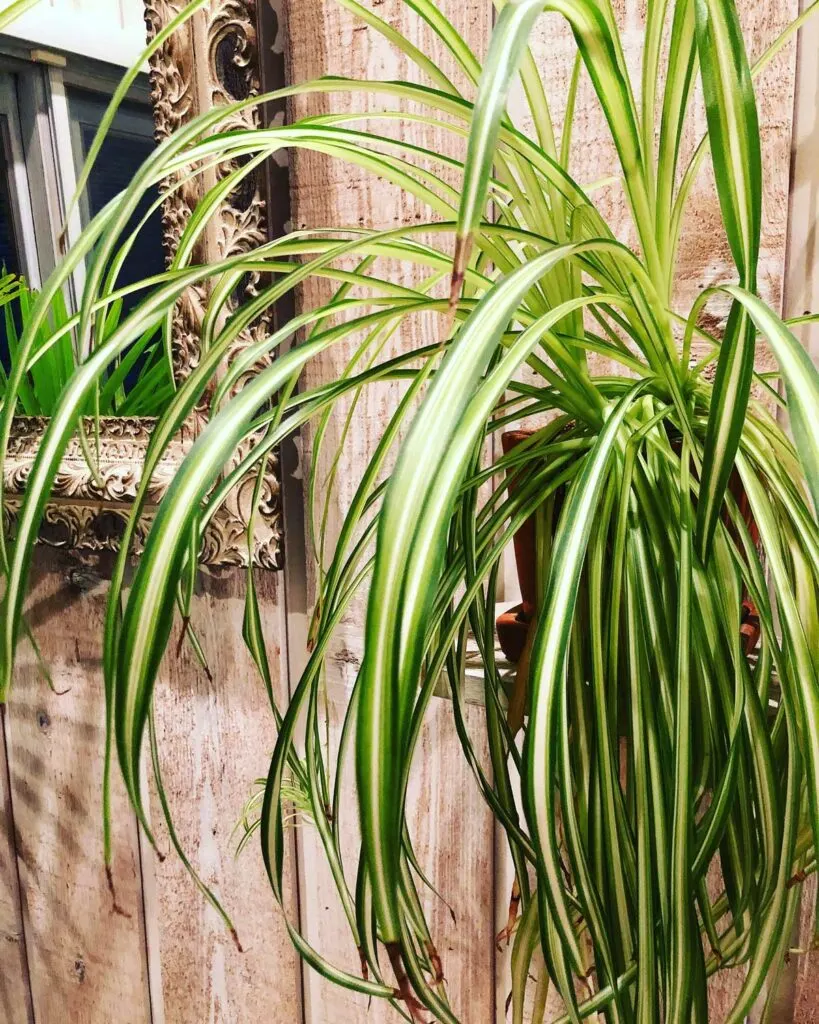
3. IT NEEDS FERTILIZER
If everything else seems to be in order (your watering, the amount of light, the right size pot) and your plant seems pale, ask yourself, have I neglected fertilization?
If so, you could have a nutrient deficiency. If your plant is starved for nutrients, particularly Nitrogen, it will look paler than it should.
All potted plants need additional nutrients. Although many potting mixes contain fertilizer, the nutrients will be quickly depleted, especially if you have a fast-growing plant like spider plants.
Regular fertilization throughout the growing season is important. Fertilize regularly, especially during the summer months.
During the winter months, if your plant has slowed down or has stopped growing, it’s ok to stop fertilizing then. But you should resume as soon as growth starts back up again.
I love using Dyna-Gro Grow as a part of my fertilizing routine for my houseplants. It is a complete fertilizer that contains all of the macro and micro nutrients that plants need to thrive.
Whatever you use to fertilize, make sure that you’re measuring both the fertilizer as well as the water (if you’re using a liquid fertilizer) in order to have the proper concentration.
Don’t eyeball amounts because it can lead to fertilizer burn. A more diluted concentration is fine, but you want to avoid unintended high concentration of fertilizer.
If you’ve enjoyed this post on spider plants, be sure not to miss my other posts on spider plants. By reading through all these resources, I’m confident that you will have a healthy spider plant!
How to Grow Spider Plants in Water

